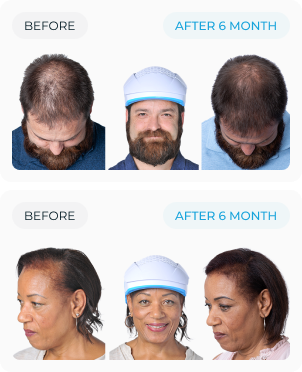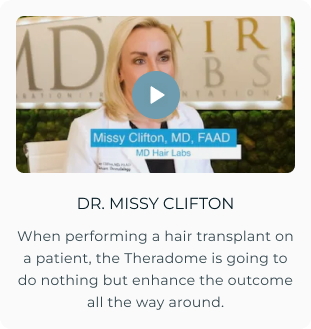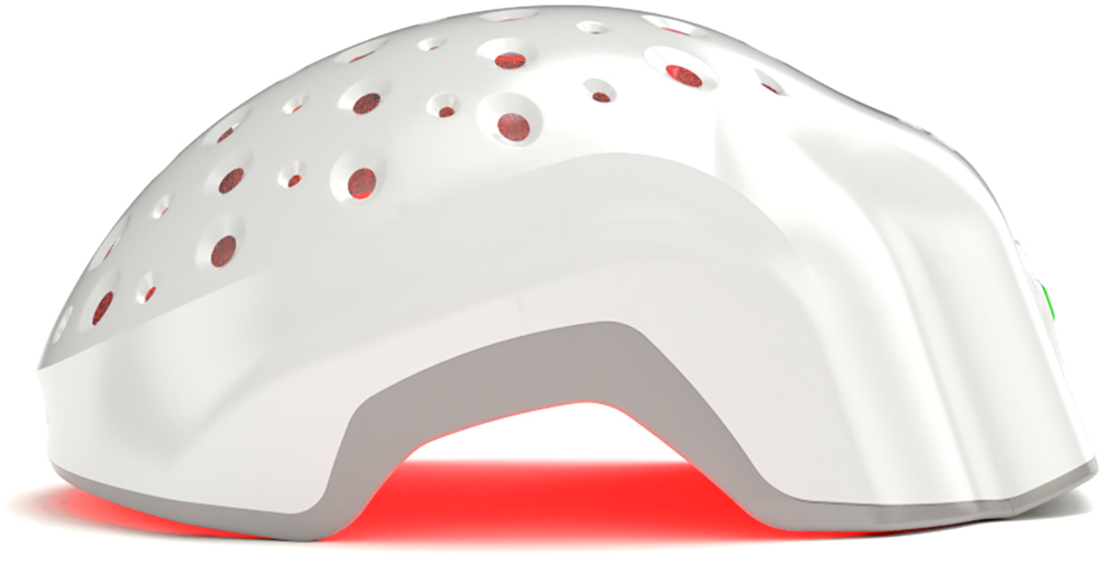Hair loss. It sneaks up on some of us, while for others, it feels like a slow, steady tide pulling strands away one by one. For many, the knee‑jerk reaction is, “Should I just get a hair transplant?” Yet… truth is, not everyone is an ideal candidate, and even if you are, transplants come with cost, recovery time, and the unnerving possibility of patchy results if not done expertly.
That’s why exploring hair transplant alternatives is often the smarter first step. According to the American Academy of Dermatology, several non‑surgical solutions can slow shedding, stimulate regrowth, or at least create the visual illusion of thicker hair. Some work by biologically influencing follicles. Others are purely cosmetic… but still life‑changing in the mirror.
This guide reveals six of the most evidence‑backed, widely discussed, and professionally endorsed options: Minoxidil, Finasteride, Low-Level Laser Therapy (LLLT), Platelet-Rich Plasma (PRP) Therapy, Scalp Micropigmentation, and Hair Thickening Fibers. We’ll explore how they work, the science behind them, and who they’re best suited for… without overpromising miracles.
But before jumping in, ask yourself: Are you looking for regrowth, illusion, or both? Because the right alternative depends not just on what you’ve lost, but also what you expect to gain. (A subtle but critical distinction many overlook.)
Understanding Hair Loss and Why Transplant Isn’t Always the Answer
Hair loss can feel alarmingly sudden but biologically, it rarely is. Most cases, whether male‑pattern or female‑pattern, evolve over years. At its core lies follicular miniaturization, where hair strands grow thinner and shorter under hormonal or genetic pressure. Dihydrotestosterone (DHT) (the infamous byproduct of testosterone) is the prime culprit in androgenetic alopecia, gradually shrinking hair until they go dormant.
But not all thinning hair comes from the same root cause. Stress, thyroid imbalances, nutritional deficits, and autoimmune conditions like alopecia areata all play their own sneaky roles. This matters because hair transplants don’t fix underlying triggers; they just move existing follicles around.
Many dermatology‑backed guidelines emphasize an important caveat:
-
Limited donor hair: If you lack robust follicles on the sides or back of your scalp, there’s nothing to transplant.
-
Progressive nature of hair loss: Transplants don’t halt ongoing shedding; new thinning can create unnatural “islands” of hair.
-
Cost and recovery: Surgical interventions can exceed $10,000, with months before seeing natural‑looking results.
So, the big question—why gamble with surgery first—when non‑surgical, clinically supported alternatives can stabilize loss or create the appearance of fullness?
Quick Comparison Table of Hair Transplant Alternatives
Choosing a hair restoration approach isn’t just about “what works”—it’s about matching expectations with mechanisms.
Here’s a distilled snapshot comparing the six leading alternatives:
|
Method |
Primary Benefit |
Time to Noticeable Effect |
Evidence Level |
Best For |
|---|---|---|---|---|
|
Minoxidil (Topical/Foam) |
Stimulates follicle activity |
3–6 months |
Strong (FDA‑approved) |
Early‑stage thinning, diffuse loss |
|
Finasteride (Oral) |
Blocks DHT, slows miniaturization |
3–6 months |
Strong (FDA‑approved) |
Male‑pattern hair loss |
|
LLLT Devices |
Boosts cellular energy in follicles |
4–6 months |
Strong (But RCTs exist) |
Early‑moderate thinning, both sexes |
|
PRP Therapy |
Uses growth factors to trigger regrowth |
3–4 sessions for effect |
Moderate (clinical studies ongoing) |
Early‑moderate loss, willing to do clinic visits |
|
Scalp Micropigmentation |
Creates illusion of density |
Immediate |
Cosmetic |
Advanced loss, shaved‑look preference |
|
Hair Thickening Fibers |
Instant visual fullness |
Immediate |
Cosmetic |
Any stage, temporary coverage |
6 Best Hair Transplant Alternatives (Evidence‑Backed)
The reality is this: a hair transplant isn’t the only game in town. Many people either aren’t ready for surgery, don’t meet the candidacy requirements, or simply want to explore less invasive options first. Below are six alternatives (rooted in evidence) that might help you slow, stop, or even partially reverse hair thinning. Some are old favorites, others are surprisingly modern.
1. Minoxidil (Topical or Foam)

If there were a celebrity in the world of hair regrowth products, Minoxidil would have its own paparazzi. This over‑the‑counter treatment, available as a liquid or foam, works by improving blood flow to hair follicles and extending the growth phase. Most studies show noticeable results after about 3 to 6 months of consistent use, but the effect is often gradual—more “slow drizzle” than “instant storm.”
But stopping Minoxidil usually leads to shedding of the hairs it helped maintain. It’s like a plant that needs constant watering… you can’t just quit and expect it to keep thriving.
2. Finasteride (Oral Prescription)

Finasteride blocks the conversion of testosterone to DHT, the hormone notorious for miniaturizing hair follicles. It’s particularly effective for male pattern hair loss, though some women may be prescribed if under careful medical supervision. Studies indicate that many users notice reduced shedding within three months, and some even experience moderate regrowth.
Side effects are rare but real (low libido, for instance, has become an internet hot topic). If that makes you pause… it should. Still, for a lot of men, the benefit outweighs the risk, especially when caught early in the hair loss journey.
3. Laser Phototherapy (LPT)

This one almost sounds like sci-fi—wearing a helmet or comb that emits gentle red light to “wake up” sluggish follicles. Yet, multiple clinical trials confirm that LPT can improve hair density when used consistently over several months.
Is it miraculous? No. But for many, it serves as a safe, non-invasive, painless, and side-effect-free treatment. Take a Theradome customer's story, for instance. At sixty-eight, she had nearly given up after years of failed shampoos and remedies. But within six months of using an FDA-cleared LPT helmet, her specialist’s comparison photos revealed a striking transformation—thicker strands, darker natural color returning, and renewed confidence. She walked out convinced, not just hopeful.
That said, context matters. In cases of advanced hair loss—smooth, shiny scalp surfaces typical of Hamilton-Norwood VI–VII in men or Ludwig-Savin I-5 in women—LPT isn’t effective, because those areas are essentially hairless skin with only oil and sweat glands remaining. For these patients, the only realistic path to visible coverage is a hair transplant. But even then, LPT plays a vital supporting role: it helps transplanted grafts survive longer (often beyond five years) and strengthens the surrounding scalp environment.
For earlier to moderate stages, LPT can be transformative. Studies and clinical experience show patients moving from about 10–15 hairs per square centimeter up to 50+ hairs in the same area. Everyone responds differently, but outside of shiny, bald scalps, results are consistently positive.
Learn in Detail: Hair Transplant vs Laser Treatment, Which is Better?
4. Platelet‑Rich Plasma (PRP) Therapy

Here’s where medicine gets a little creative. Platelet-rich plasma (PRP) therapy involves drawing your own blood, spinning it to concentrate the platelets, and injecting that plasma into the scalp. Platelets are rich in growth factors, which may stimulate follicle activity.
Sessions are usually done monthly at first, and while the procedure sounds intimidating, many patients report tolerable discomfort. The biggest drawback is cost and inconsistency. Results can vary widely, and some people see modest thickening while others barely notice a change. Still, its “bio‑natural” appeal makes it a favorite for those avoiding pharmaceuticals.
5. Hair Fibers and Concealers

Okay, not every solution has to be high‑tech or clinical. Sometimes, the simplest fix is cosmetic. Keratin hair fibers, tinted sprays, and scalp concealers can make thinning areas look dramatically fuller in seconds.
Sure, they don’t regrow hair, but they do restore confidence quickly. And in social situations—job interviews, weddings, or even first dates—confidence often matters just as much as biology.
6. Scalp Micropigmentation (SMP)

SMP doesn’t grow hair (let’s be clear) but it can create the illusion of density so convincingly that many people never notice the difference. The process involves tattooing tiny, pigment‑matched dots across the scalp to mimic natural hair follicles. For shaved styles, it can produce a clean buzz‑cut look; for thinning hair, it reduces the visible contrast between scalp and strands.
What’s appealing here is permanence and instant gratification. No months of waiting, no pills to remember. But the flip side is commitment. Once the pigment is in, any drastic hairstyle change may expose the illusion. A friend once joked it’s like “cosmetic Photoshop for your head”—and honestly, that’s not far off.
Each of these alternatives comes with its own mix of promise and limitation. And while none are instant miracles, some are genuinely transformative when used consistently—or in smart combinations. It all depends on your timeline, tolerance for upkeep, and how aggressively you want to fight the creeping retreat of your hairline.
Would I pick one over a transplant immediately? Maybe. But that depends on the story your scalp is already telling.
What Are the Potential Risks With Hair Transplant Surgery?
Hair transplant surgery is a widely recognized, expensive procedure for restoring and treating hair loss. Up to 3,000 new donor hairs can be transplanted at an average cost of $5.44 per hair graft in the U.S. Along with the high surgery cost, certain risks need to be considered before going for hair transplant surgery:
Infection
Like any surgical procedure, there is a risk of infection at the hair transplant site. There is a small chance of bacteria entering the surgical site during the procedure, which can lead to an infection.
Scarring
Scarring is a possible risk that can occur with hair transplant surgery. When hair follicles are transplanted from one area to another, small scars can form at both the donor and recipient sites. These scars are typically minimal and tend to fade over time. However, it's important to note that the extent of scarring can vary depending on individual healing factors and the techniques used during the procedure.
Bleeding
During the hair transplant procedure, bleeding from the donor and recipient sites, where the hair follicles are extracted and transplanted, is possible. In rare cases, excessive bleeding may occur, requiring additional medical attention.
Numbness or Lack of Sensation
Some individuals may experience temporary or permanent loss of sensation in the areas involved in the procedure, such as the donor and recipient sites. This can occur due to damage to the nerves during the surgery. Although this is uncommon, it's important to be aware of the possibility. In most cases, the sensation gradually returns as the nerves heal. However, in rare instances, numbness may continue.
Post-Operative Discomfort
After hair transplant surgery, it is common to experience postoperative discomfort. This means you might feel pain, swelling, or itching in the areas where the hair transplant occurred.
Considering these possible risks, you might question whether hair transplants are worth the risk. Luckily, there are alternative treatments available that do not involve surgery and can help you achieve similar results without these concerns.
How to Choose the Right Hair Transplant Alternative?
Selecting the right approach is less about trends and more about fit. What works wonders for your colleague might flop for you. Hair density, age, lifestyle (tiny variables you might shrug at) change everything.
Assess Your Hair Loss Pattern
Start with the mirror. (Uncomfortable? Yes. Necessary? Also yes.) Male pattern baldness behaves differently from diffuse thinning, and female hair loss often requires a more delicate touch. Treatments like PRP thrive in early thinning stages, whereas SMP can create instant camouflage for advanced loss.
Consider Budget and Maintenance
Some treatments are front‑loaded with costs (like SMP or laser devices) while others demand long‑term spending, like prescription medication or PRP sessions every few months. Which rhythm suits your life better? If constant upkeep feels exhausting (or likely to be forgotten), leaning toward semi‑permanent options might save your sanity.
And yet, a budget plan can backfire if you ignore the upkeep. Imagine investing in a laser cap only to let it collect dust under the bed. It happens more often than you’d think.
Balance Aesthetic Goals With Realism
Here’s the tricky part. Everyone wants a lush mane back, but not every alternative can deliver that cinematic transformation. Ask yourself—do you want subtle thickening, or a “can’t-believe-it’s-not-real” buzzed SMP look? Managing your expectations upfront avoids heartbreak later.
Even dermatologists sometimes nudge patients toward visual enhancements (like SMP) if hair regrowth alone can’t meet the dream. Strange advice at first, but it works.
Professional Guidance and Safety Considerations
This part is less thrilling… but it’s the difference between a safe journey and a scalp horror story.
Why Medical Consultation Is Non‑Negotiable
Google is seductive. Endless forums, YouTube reviews, “miracle” oils from someone’s uncle. But misdiagnosing your own hair loss type is the fastest way to waste money… or worse, trigger shedding. A trichologist or dermatologist can spot underlying conditions that DIY eyes miss.
Many people assume their shedding is just stress or age, only to discover—through professional testing—that the real culprit is something entirely different, such as an iron deficiency or a thyroid imbalance. With proper diagnosis and targeted treatment, what seemed like progressive hair loss can sometimes be corrected with a simple medical intervention. This is why consultation with a qualified specialist is non-negotiable.
Understanding Potential Risks and Side Effects
Every treatment (yes, even “natural” ones) has caveats. Minoxidil can irritate skin, PRP can bruise, laser therapy takes discipline, and SMP requires trusting your head to a tattoo gun.
It’s not meant to scare you, but you need to know what you’re signing up for. Nothing is truly risk‑free, and sometimes the risk is simply disappointment.
Conclusion
At the end of the day, hair restoration is part science, part art… and part patience. There isn’t a single “best” hair transplant alternative for everyone… just better fits for certain lifestyles, scalp conditions, and comfort levels.
If you remember nothing else from this guide, remember this: treat your hair like a long game. Quick fixes can help, but a thoughtful approach often blends two or three strategies over time.
Funny enough, the best outcomes tend to come from people who stop chasing instant miracles and focus on consistent, realistic improvements. Maybe that’s true of life, too.
So—what will your first step be?

























